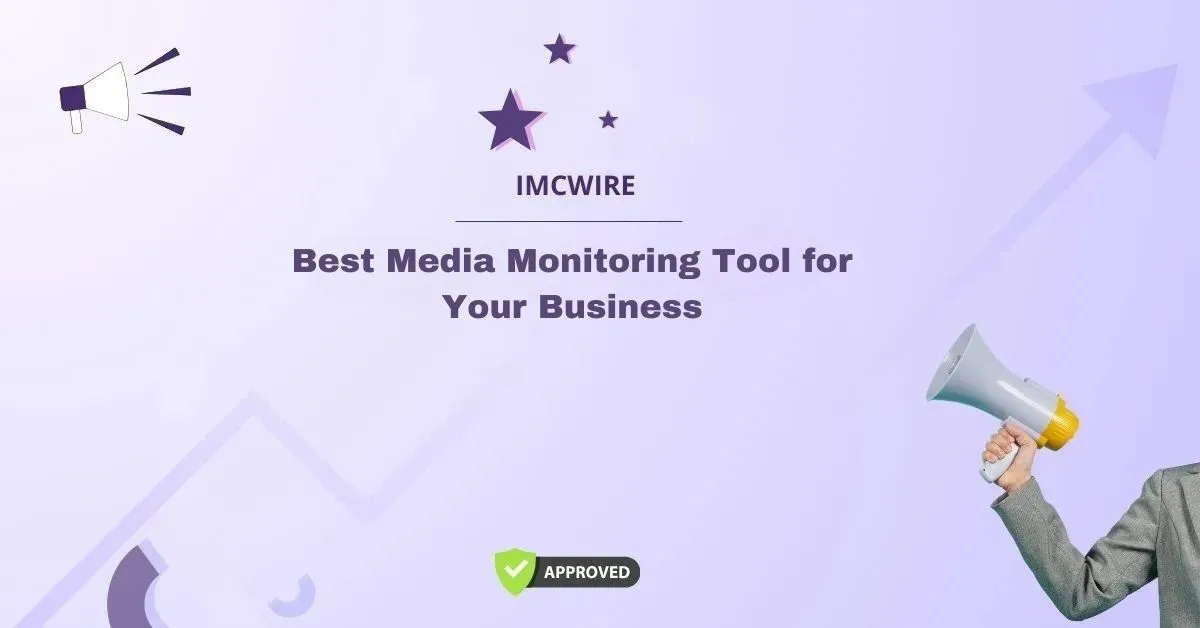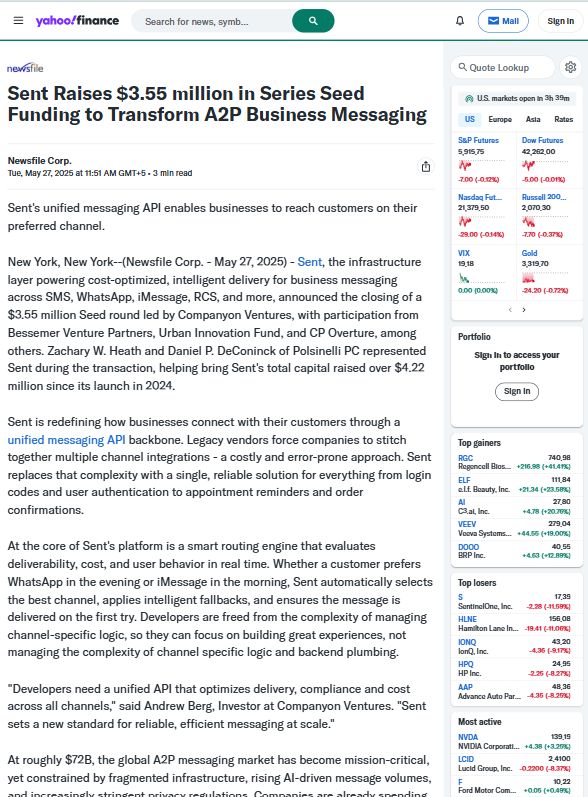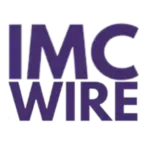What is Paid Media?
Paid media is a form of advertising that involves payment for promotional content. It plays a crucial role in marketing and PR strategies by increasing brand visibility, generating leads, and driving conversions. Companies can optimise their media strategy by strategically placing messages where the target audience is most likely to engage.
Table of Contents
There are several different formats of paid media, each offering unique opportunities for engagement. Search ads, often seen on engines like Google, allow businesses to bid on keywords relevant to their products or services, appearing prominently in search results. Display ads, which come in varying formats such as banners and videos, are featured on websites and apps, making them visually impactful and capable of reaching a vast audience. Social media ads leverage platforms like Facebook, Instagram, and LinkedIn to promote content directly in users’ feeds, enabling brands to engage with customers in a more personalized manner. Additionally, sponsored content includes articles or posts that are funded by a brand to appear as though they are organic content, providing valuable information while subtly promoting a product or service.
Understanding the distinction between paid media, owned media, and earned media is crucial for comprehending the full landscape of modern marketing. Owned media consists of channels that a brand controls, such as its website, blog, or social media profiles. In contrast, earned media refers to publicity gained through promotional efforts other than paid advertising, such as media coverage and word-of-mouth. While paid media allows for targeted outreach and immediate visibility, owned and earned media build credibility and foster long-term relationships. All three media types are essential components of a comprehensive marketing strategy, working synergistically to enhance brand reputation and ensure effectiveness in communication.
The Importance of Paid Media in PR
In today’s dynamic landscape, paid media has emerged as a fundamental component of public relations strategies. With the rapid evolution of digital platforms and the increasing complexity of audience segmentation, traditional organic methods often fall short in achieving desired outreach and engagement. Paid media addresses this gap by providing the means to effectively and efficiently reach target audiences.
One of the pivotal advantages of paid media in PR is its ability to enhance message visibility. As algorithms on social media and search engines become more sophisticated, the organic reach of content can diminish significantly. Paid media allows PR practitioners to ensure that their content is not only seen but also strategically placed in front of the most relevant audiences. This targeted approach enhances the likelihood of successful engagement, enabling organizations to communicate directly with consumers, stakeholders, and influencers who matter most.
Moreover, paid media complements PR objectives by facilitating brand awareness, reputation management, and customer engagement. Campaigns can be tailored to amplify key messages during critical moments, such as product launches or crisis communications. Through platforms such as Google Ads or social media promotions, brands can generate immediate visibility and foster ongoing interactions, ultimately contributing to their overall communication strategies.
Investing in paid media also allows for detailed analysis and tracking, which is crucial for measuring campaign effectiveness. Marketers can gather valuable insights about audience behaviors and preferences, enabling them to refine their strategies and enhance future communication efforts. In this manner, paid media not only serves immediate PR needs but also helps shape long-term communications planning.
Overall, in a time where the competition for audience attention is fierce, integrating paid media into public relations strategies is indispensable. It lays a robust foundation for achieving PR goals while navigating the complexities of modern digital communication.
Benefits of Paid Media
Paid media has emerged as a vital component of modern public relations strategies, offering numerous benefits that can greatly enhance a brand’s visibility and effectiveness in reaching target audiences. One of the most significant advantages of paid media is its ability to boost visibility. Brands can ensure their messaging appears prominently in various formats, such as social media ads, display advertising, and sponsored content. This increased exposure can lead to higher engagement rates, ultimately amplifying the brand’s voice in a crowded marketplace.
In addition to visibility, paid media enhances brand recognition. By consistently appearing in front of potential customers, brands can foster familiarity and trust. This consistent presence helps to embed the brand in the consciousness of the audience, making it more likely for consumers to consider the brand during their purchasing decisions. Enhanced brand recognition, in tandem with increased visibility, creates a powerful formula for establishing a long-lasting brand identity.
Another crucial benefit of paid media is improved targeting and segmentation. Through sophisticated targeting options, brands can reach specific demographics based on factors such as interests, location, and behaviors. This level of precise targeting allows brands to tailor their messaging to resonate with particular audience segments, leading to more personalized experiences and higher conversion rates. Moreover, segmentation helps in optimizing the allocation of resources by concentrating efforts on high-potential groups.
Lastly, paid media provides measurable results, a critical aspect for any PR campaign. Marketers can track metrics such as impressions, clicks, and conversions, allowing them to assess the effectiveness of their campaigns. This data-driven approach enables brands to refine their strategies over time, maximizing the return on investment. Through these advantages, paid media proves to be an essential tool for modern PR efforts, facilitating effective communication and engagement with audiences.
Amplifying PR Efforts Through Paid Media
Paid media has emerged as a crucial component in amplifying public relations (PR) efforts, enabling organizations to extend their reach, enhance messaging, and ultimately drive engagement. The integration of paid media strategies into PR campaigns leverages the strengths of both disciplines, creating a powerful synergy that improves visibility and fosters audience interaction. By investing in paid media opportunities, PR professionals can ensure that their messages are not only delivered but also amplified across diverse platforms.
To effectively integrate paid media into PR campaigns, organizations must start by identifying their target audiences and selecting the most relevant channels. Social media platforms, search engines, and industry-specific websites offer a range of paid advertising options, allowing PR teams to tailor their messages to specific demographics. For instance, sponsored posts on platforms such as Facebook or Instagram can enhance the reach of a new product launch, while pay-per-click campaigns on Google can direct traffic to news articles or press releases.
Successful examples of this integration can be observed in various campaigns. One notable instance is the collaboration between a well-known beverage brand and a popular influencer, which utilized sponsored content to create a buzz around a new initiative. By aligning the PR narrative with paid media promotion, the brand was able to amplify its messaging and engage a wider audience. Additionally, the strategic use of paid media during crisis communications can help manage narratives effectively, providing critical information promptly while re-establishing trust and transparency.
Furthermore, the analytics derived from paid media campaigns can provide significant insights into consumer preferences and behaviors. By monitoring engagements and conversions, PR practitioners can refine their strategies and develop more effective messaging that resonates with the audience. This data-driven approach enhances the overall impact of public relations efforts, ensuring that messaging is both relevant and timely.
Real-World Examples of Paid Media Success
The efficacy of paid media within public relations strategies can be illustrated through a multitude of successful case studies from diverse brands. One notable example is the 2019 campaign by Nike, which featured the tagline “Believe in Something. Even if It Means Sacrificing Everything.” This campaign was spearheaded by a controversial advertisement featuring former NFL player Colin Kaepernick. By leveraging paid media channels, Nike not only captured widespread attention but also sparked meaningful conversations around social justice and athlete activism. This instance exemplifies how a well-executed paid media campaign can align a brand’s message with current social issues, leading to increased visibility and consumer engagement.
Another striking case is the “#LikeAGirl” campaign by Always, which sought to empower young girls and challenge societal norms associated with femininity. The campaign used paid media to distribute a compelling video that resonated emotionally with the target audience. By combining social media advertising with traditional broadcasting, Always successfully transformed a phrase often used derogatively into a clarion call for empowerment. The result was a significant uplift in sales and a strengthened brand association with feminism, demonstrating the intrinsic value of paid media in enhancing public perception.
Furthermore, the Airbnb campaign, “Live There,” employed targeted paid media to shift consumer focus from merely booking accommodations to experiencing local cultures. This initiative could be observed across platforms including search ads, social media, and display advertising, effectively reaching diverse audiences. The innovative approach not only achieved increased person-to-person bookings but also reinforced Airbnb’s commitment to creating unique travel experiences. Such case studies reveal that when brands harness the full potential of paid media, they not only broaden their reach but also foster deeper connections with their audiences, ultimately driving significant engagement and loyalty.
Challenges and Considerations with Paid Media
As organizations increasingly incorporate paid media into their public relations (PR) strategies, several challenges and considerations emerge that demand attention. One significant hurdle is budget constraints. Companies may allocate limited resources to paid media campaigns, leading to the necessity for careful planning and optimization. This often requires PR professionals to justify expenditures, emphasizing return on investment (ROI) to stakeholders. A well-structured budget that considers testing, targeting, and creative development is essential for maximizing impact without overspending.
Another challenge faced is ad fatigue, which occurs when audiences are repeatedly exposed to the same advertisements. This can diminish engagement levels, as audiences become desensitized to the messaging. To combat ad fatigue, PR teams should focus on diversifying content and creative approaches. Ad rotation strategies and audience segmentation can help introduce variety, ensuring that the same individuals do not see the same ad too frequently. Innovative messaging and formats, such as native ads or interactive content, can also aid in maintaining audience interest and engagement.
The risk of negative perceptions is another consideration that organizations must address when utilizing paid media. Audiences can develop skepticism toward paid content, viewing it as less authentic compared to organic PR efforts. To mitigate this risk, it is important to maintain transparency around paid partnerships and content. Building trust with audiences requires a consistent approach that balances paid media initiatives with genuine, informative content. Content that aligns with audience values and interests can foster positive perceptions and reinforce brand credibility.
By anticipating these challenges and implementing strategic solutions, organizations can leverage paid media effectively within their PR strategies. Prioritizing budget optimization, content variety, and audience trust will enhance the overall success of paid media campaigns.
Measuring the Impact of Paid Media
Effectively measuring the impact of paid media is essential for evaluating the success of any public relations (PR) strategy. This evaluation process is commonly structured around key performance indicators (KPIs) that provide insights into the performance and effectiveness of media campaigns. Among the most critical KPIs are impressions, clicks, conversion rates, and return on investment (ROI). Understanding these metrics allows PR professionals to optimize their campaigns and deliver value to clients.
Impressions refer to the total number of times an ad is displayed, regardless of whether it was clicked. This metric provides a foundational understanding of how widely a message is disseminated across target audiences. Meanwhile, clicks signify the interaction between the audience and the advertisement, indicating a level of interest. Monitoring clicks helps determine the effectiveness of the ad’s creative elements in engaging potential customers.
Conversion rates take this analysis a step further by measuring the percentage of users who perform a desired action after engaging with an advertisement, such as making a purchase or signing up for a newsletter. This metric is critical as it directly correlates with the success of a paid media campaign in achieving its objectives. High conversion rates are indicative of a well-structured campaign that resonates with its audience, which is a fundamental aspect of successful PR strategies.
Finally, return on investment (ROI) quantifies the financial return generated from a paid media campaign relative to its costs. Calculating ROI enables PR practitioners to assess the economic value of their efforts and make informed decisions regarding future campaigns. By utilizing these diverse metrics, professionals can ensure that their paid media initiatives not only reach their audiences but also deliver substantial and measurable results.
Future Trends in Paid Media and PR
The landscape of paid media and public relations is continuously evolving, driven by technological advancements and shifting consumer behaviors. One of the most notable emerging trends is the rise of programmatic advertising, which utilizes automated technology to buy and sell digital advertising space in real time. This shift not only enhances the efficiency of ad placements but also improves targeting capabilities, allowing brands to reach their audiences more effectively. As programmatic advertising becomes more sophisticated, public relations professionals can leverage this technology to create data-driven campaigns that maximize ROI.
Additionally, the growing importance of video content cannot be overlooked. With the proliferation of social media platforms, video has become a dominant format for audience engagement. Brands are now prioritizing storytelling through video as it offers a unique way to communicate messages. Integrating video into PR strategies can enhance brand visibility and foster emotional connections with target audiences. As viewer preferences continue to trend towards rich and interactive content, PR professionals should consider investing in video production and distribution as part of their paid media strategies.
Another significant trend is the influence of artificial intelligence (AI) on targeting and messaging. AI technologies are becoming increasingly integrated into marketing strategies, enabling brands to analyze vast amounts of data to identify consumer preferences and behaviors accurately. This capability allows for more personalized and relevant messaging, which can significantly enhance the effectiveness of paid media campaigns. PR practitioners must adapt to these technological advancements by utilizing AI-driven tools to refine their strategies and improve audience engagement.
In light of these trends, it is crucial for PR professionals to remain proactive in adapting their strategies. By embracing programmatic advertising, leveraging video content, and incorporating AI technologies, brands can position themselves effectively in a competitive market. Staying attuned to these developments will ensure the continued relevance of paid media in modern public relations strategies.
Conclusion: Unlocking the Secrets of Paid Media in PR
In today’s rapidly evolving communication landscape, the integration of paid media within public relations strategies has emerged as a critical component for success. Paid media not only enhances visibility but also ensures that messages reach the intended audiences effectively. Throughout this discussion, we have explored the various dimensions of paid media, including its role in amplifying organic efforts, its capacity to target specific demographics, and its effectiveness in fostering engagement.
The significance of paid media in modern PR cannot be overstated. As brands grapple with competition in crowded markets, utilizing paid media allows for a strategic advantage. By investing in targeted advertising, companies can tailor their messaging to resonate with diverse audience segments, thereby increasing the likelihood of positive reception. This level of customization fosters meaningful connections, transforming passive viewers into active participants in a brand’s narrative.
Moreover, paid media serves as a complementary tool alongside traditional PR tactics. It provides the means to measure performance quantitatively, offering insights that can shape future campaigns. Tracking engagement and conversion rates allows PR professionals to refine their strategies continually, ensuring that resources are allocated effectively. This data-driven approach not only maximizes ROI but also enhances overall communication efficacy.
In light of these advantages, organizations are encouraged to explore paid media as an integral facet of their public relations initiatives. Embracing paid media can unlock new pathways for audience engagement and brand awareness, empowering businesses to navigate challenges and leverage opportunities within the industry. Ultimately, integrating paid media into PR strategies represents a forward-thinking approach that seeks to align traditional communication methods with modern technological capabilities. By doing so, brands can thrive in today’s dynamic environment, fortifying their presence and influence.










































